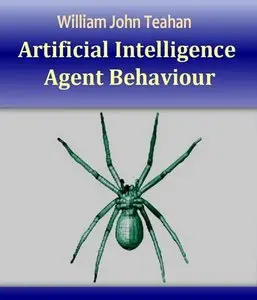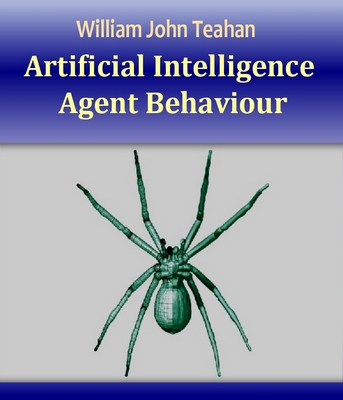"Artificial Intelligence – Agent Behaviour" by William John Teahan
BoBoCoAe, WJT & Ventus Publishing ApS | 2010 | ISBN: 8776815595 9788776815592 | 240 pages | PDF | 11 MB
BoBoCoAe, WJT & Ventus Publishing ApS | 2010 | ISBN: 8776815595 9788776815592 | 240 pages | PDF | 11 MB
This book is the second in a series on Artificial Intelligence. It adopts a behaviour-based approach to the design of agent-oriented systems. Topics covered from a behaviour-based perspective include agent communication, searching, knowledge and reasoning, and intelligence.
Accompanying the book is a series of exercises and NetLogo models (with source code and documentation).
Content
6. Behaviour
6.1 What is behaviour?
6.2 Reactive versus Cognitive Agents
6.3 Emergence, Self-organisation, Adaptivity and Evolution
6.4 The Frame of Reference Problem
6.5 Stigmergy and Swarm Intelligence
6.6 Implementing behaviour of Turtle Agents in NetLogo
6.7 Boids
6.8 Summary
7. Communication
7.1 Communication, Information and Language
7.2 The diversity of human language
7.3 Communication via communities of agents
7.4 Communicating Behaviour
7.5 The Small World Phenomenon and Dijkstra’s algorithm
7.6 Using communicating agents for searching networks
7.7 Entropy and Information
7.8 Calculating Entropy in NetLogo
7.9 Language Modelling
7.10 Entropy of a Language
7.11 Communicating Meaning
7.12 Summary
8. Search
8.1 Search Behaviour
8.2 Search Problems
8.3 Uninformed (blind) search
8.4 Implementing uninformed search in NetLogo
8.5 Search as behaviour selection
8.6 Informed search
8.7 Local search and optimisation
8.8 Comparing the search behaviours
8.9 Summary and Discussion
9. Knowledge
9.1 Knowledge and Knowledge-based Systems
9.2 Knowledge as justified true belief
9.3 Different types of knowledge
9.4 Some approaches to Knowledge Representation and AI
9.5 Knowledge engineering problems
9.6 Knowledge without representation
9.7 Representing knowledge using maps
9.8 Representing knowledge using event maps
9.9 Representing knowledge using rules and logic
9.10 Reasoning using rules and logic
9.11 Knowledge and reasoning using frames
9.12 Knowledge and reasoning using decision trees
9.13 Knowledge and reasoning using semantic networks
9.14 Summary and Discussion
10. Intelligence
10.1 The nature of intelligence
10.2 Intelligence without representation and reason
10.3 What AI can and can’t do
10.4 The Need for Design Objectives for Artificial Intelligence
10.5 What are Good Objectives?
10.6 Some Design Objectives for Artificial Intelligence
10.7 Towards believable agents
10.8 Towards computers with problem solving ability
10.9 Summary and Discussion
References
with TOC BookMarkLinks



